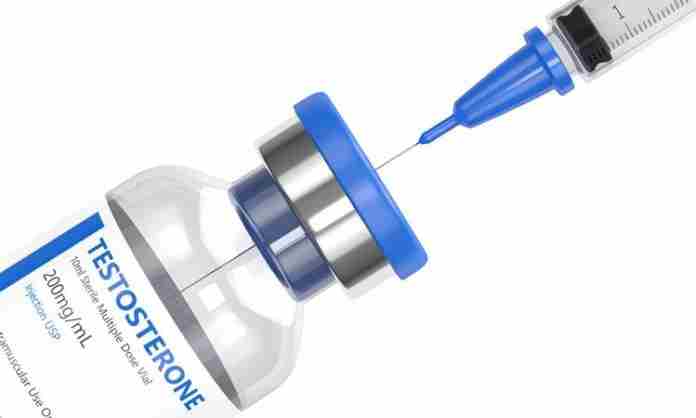 Advancements in medical technologies have brought new challenges to sports regulators, especially the International Federations. One of the newest battlefields is transgender athletes.
Advancements in medical technologies have brought new challenges to sports regulators, especially the International Federations. One of the newest battlefields is transgender athletes.
Back in February, now-former marathon world-record holder Paula Radcliffe (GBR) sounded the alarm quite clearly, telling the BBC:
“Right now, transgender women are not a threat to female sport. But you would be naive if you thought that, by not putting in any rules, it couldn’t come to that at some point in the future.
“People will manipulate this if there is an opening there to make money and win medals and we’ve seen the lengths people go to, the lengths Russia went to cheat in sport.
“Absolutely, any transgender men or women should be able to access sport; it just depends which category.”
The International Olympic Committee adopted rules in 2015 that are now outdated and has not been able to come to a consensus on new regulations as yet. But that has not stopped the International Assn. of Athletics Federations (IAAF, soon to be World Athletics) on its own path.
Moving forward after the Court of Arbitration for Sport upheld its new regulations on women with differences in sex development – the Caster Semenya case – the IAAF has now taken the lead in the transgender area, and working with other federations.
In a forthright approach to the issue, the IAAF hosted a meeting in Lausanne (SUI) on 19 October that included not only scientific and legal experts, but also the International Paralympic Committee and the International Federations for golf, tennis and rowing.
A report on this “International Meeting on Transgender Eligibility in Competitive Sports” was issued 12 days later and outlined – with clarity – a process which could be used for regulating trans-gender athletes who want to compete as female. Highlights:
“2. Each sport is different with regard to the physical attributes that distinguish male from female performances and with regard to their policy preferences for classifications. Rules or regulations intended to accommodate trans athletes according to their gender identity should be sports-specific and designed by the relevant international federation. So that the eligibility standards remain consistent with the best available evidence, such rules or regulations should always be considered ‘living documents,’ to be updated according to the latest scientific knowledge.
“3. It is widely recognised that testosterone (T) distributes bimodally among male and female populations. T is also the primary known driver of the performance gap between males and females. Consequently, while acknowledging that testosterone is not the only physical basis for the performance gap, serum T has been found to be an acceptable proxy to distinguish males from females for sports purposes.
“4. If a federation decides to use serum T for this purpose, in order to be consistent with the biological rationale for the female category, and based on current data, rules or regulations on trans women’s eligibility for that category should adopt a fixed threshold at or below 5 nmol/L. Consistent with the fact that healthy female T levels are typically in the range from 0 to 1.7 nmol/L, it was noted that the typical medical target serum T for trans women who choose such intervention is well below 5 nmol/L.”
For those who followed the Semenya case, the reference to 5 nanomoles per liter of blood is familiar: it’s the same level to which the IAAF now requires women with “differences in sex development” to meet to compete in events from 400 m to the mile. The transgender proposal would apply to all athletes wishing to compete in the female classification.
The report also noted that as with the Semenya case, there is also a time target to reduce high testosterone levels so as to create a “level playing field” for transgender athletes to compete as women:
“The minimum interval between the achievement of the target serum T and eligibility for competition should be tailored for the purpose of each sport, and possibly also for events within a sport. Considering currently available scientific knowledge, an interval of at least 12 months remains reasonable; more may be appropriate depending on the sport and event.”
These concepts weren’t chosen randomly, or based on simply guessing. In addition to the scientific testing on testosterone, most of this approach was modeled after the successful defense of the IAAF’s regulations that were challenged by Semenya. There’s no doubt that a legal challenge will be thrown up against such rules as they are adopted; those regulations which will be upheld by the Court of Arbitration for Sport are those which are as narrowly-drawn as possible to achieve the desired effect of fair competition.
The IAAF issued its own regulations for transgender eligibility, approved by the IAAF Council in Doha (QAT) in October and effective as of 1 October 2019. The 21-page document requires those wishing to compete in the female division (in any event) to maintain serum testosterone levels of 5 nmol/L for a period of a year. The regulations note that typical women’s testosterone levels are 0.6-1.68 nmol/L vs. normal male levels of 7.7-29.4 nmol/L.
But even as all this was going on, a new study was announced in the British Journal of Sports Medicine, in which a Swedish research team – some of whom have worked with the IAAF – tested the impact of a moderate testosterone increase on athletic achievement in young women.
The findings were that a modest, 10 mg treatment of testosterone cream increased serum testosterone by 378% from 0.9 nmol/L to 4.3 nmol/L and an 8.5% increase in running performance was observed. That’s substantial and continues to confirm the crucial role of testosterone in improved athletic performance.
The IAAF is leading the issue and the impact has already spread beyond the federations attending the Lausanne conference. On Monday (4th), the Union Cycliste Internationale (UCI) confirmed that it is “pleased by the consensus obtained by the working group” and “The UCI shares the conclusions reached by the participants, who included representatives of transgender and cisgender athletes. The conclusions notably state that if a Federation decides to use serum testosterone to distinguish between male and female athletes, it should adopt a maximum threshold of 5nmol/L for eligibility for the female category.” It plans to issue guidelines which can be adopted for use in 2020.
The UCI’s statement is especially important given the current debate inside the cycling community following the second consecutive World Masters Sprint title won by Canada’s Rachel McKinnon, a transgender female, in late October.
McKinnon says she is compliant with the IOC’s 10 nmol/L regulations, but the firestorm about her status on social media makes it clear that new regulations will be just the start – not the end – of the debate.
There was a time, not long ago, when the IFs worried mostly about setting up event, publishing competition rules and trying to promote their sports. Now, the IAAF is leading the way – even ahead of the IOC in some areas – in organizing scientific programs both in research and in anti-doping and integrity enforcements.
There is a lot of criticism in track & field circles of IAAF chief Sebastian Coe and his Monaco-based headquarters team, about the recent World Championships in Doha (QAT) and about the standing of the sport internationally. But in the lab and in turning up the pressure on doping, they deserve credit.
Rich Perelman
Editor
If you enjoyed this commentary, sign up to receive our exclusive TSX Intelligence Report by e-mail by clicking here. You can also refer a friend by clicking here.

























